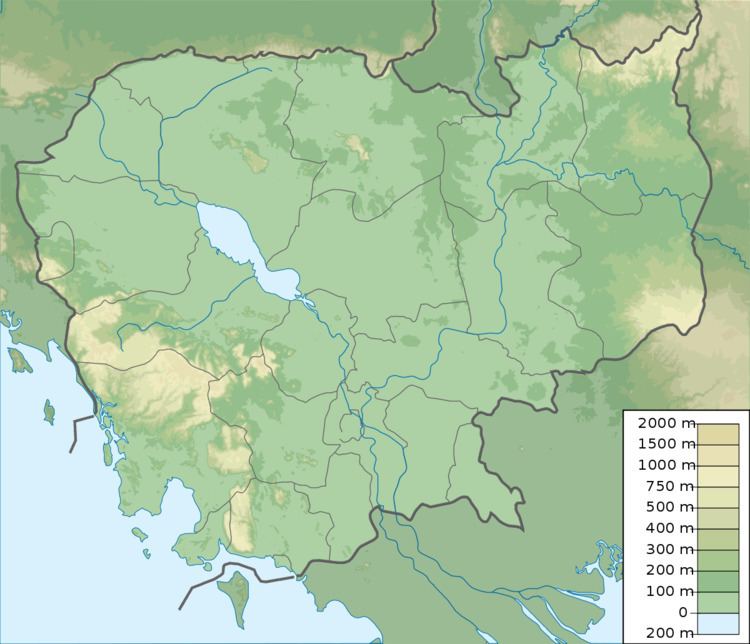Status Proposed Surface area 211 km² | Location Stung Treng Province Opening date 2016 (estimated) Height 22 m Impound Mekong | |
 | ||
Similar Lower Se San 2 Dam, Messochora Dam, Huangdeng Dam, Jinghong Dam, Buôn Kuốp Hydroelectric Power St | ||
The Stung Treng Dam is a proposed hydroelectric dam on the Mekong River in Stung Treng Province, Cambodia. It would be located on the mainstream of the Lower Mekong River. The project is controversial for several reasons, including its possible impact on the fisheries, as well as other ecological and environmental factors.
Contents
Map of Stung Treng Dam, Cambodia
History
In 2007, the Russian company Bureyagesstroy got a license to conduct a feasibility study on a dam. The feasibility study was carried out and the company asked permission to build the hydroelectric power station. However, on December 9, 2009, a memorandum of understanding was signed between the Cambodian Government and the Vietnam Industrial and Urban Area Investment Development Corp (IDICO) to conduct a new feasibility study on the dam. The results of this survey have not been released.
Description
The Stung Treng Dam would be an earth core rockfill gravity dam. If completed, the dam's crest would be 10,844 metres (35,577 ft) long and 22 metres (72 ft) high. Its rated head would be 15.2 metres (50 ft). It would have an installed capacity of 980 MW, and would, on average, generate 4,870 GWh per year. The dam's reservoir, which would extend well beyond the mainstream canal, would have an active storage of 70,000,000 cubic metres (57,000 acre·ft), and would inundate an area of 211 square kilometres (81 sq mi). The reservoir would be 50 kilometres (31 mi) long.
Impact
Multiple independent agencies, including International Rivers, the Save the Mekong campaign and other have all raised concerns about the dam's construction. In addition, Cambodia is a member of the Mekong River Commission, which requires prior notification of hydropower construction on the river's mainstream – i.e. plans for the Stung Treng will be subject to scrutiny by Laos, Thailand and Vietnam. A report authorized by the Mekong River Commission and released in January 2010 recommended that the Stung Treng along with the Sambor Dam be delayed for 10 years.
The dam site lies within the Stung Treng Ramsar Site, which effectively obliges the Royal Cambodian Government to ‘actively support' the three 'pillars' of the Ramsar Convention:
It is expected that fish migration routes (which support the world's largest inland fishery on the Tonlé Sap) will be essentially wholly impeded. The two proposed dams of the Sambor and the Stung Treng would have the Mekong river basin's highest sediment trapping efficiencies of all the Lower Mekong Basin's proposed mainstream projects, destabilising downstream channels between Kratié and Phnom Penh and reducing overbank siltation in the Cambodian floodplain.
If built, an estimated 21 villages with 2,059 households and 10,617 people will be displaced with the construction of the dam.
